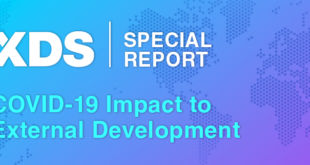I get to spend a lot of time with development studio teams and was sat with a group from across the industry, that have built many of the most exciting games of the last 20 years. We were discussing how to keep players engaged, and the topic ended up swirling around ‘friction’, and specifically: how much friction can be solved?
To be clear, when we talk about friction, we mean anything that stands in the way of players playing. This could include things as complex as skill trees, as necessary as forcing them to enter payment details, and as seemingly innocuous as a play button, i.e. one developer suspected their play button was causing attrition at the start of the game. They removed it and jumped players right into the game… and immediately saw a 10% jump in retention!
Tackle friction in a smart way
Some developers admit that they just don’t get around to dealing with friction, others recognise that they’re overwhelmed by the sheer number of friction points they have. The best system I have found is to list your friction and then ask how helpful and avoidable each piece is?
Start by crossing off the list friction you want. This may be friction that results from having a difficult game, which the audience may want, so it doesn’t need to be “fixed”. It might be something as essential as requiring login or payment info for DLC or upgrades. That may not be the most fun friction, but it’s vital to your business. You want to balance this kind of friction, and make sure the benefits outweigh the cost to the player.
Next to review is unavoidable friction, which might be a hardware limitation, a legal screen or a partner logo. These are the cost of doing business if you want to be available on a particular device, region, or are dependent on a specific partner agreement. It may not help the players or make you more money, but it is unavoidable. You want to mitigate this type of friction as much as possible, while understanding it won’t entirely go away.
We’re now left with the avoidable, harmful friction. It doesn’t save you money, it isn’t required by law, it doesn’t create a better experience for players, it doesn’t increase profit. It needs to be eliminated, because nobody is asking you to keep it.
Avoidable friction is usually the result of poorly executed design, writing or technology. Think about the last game you played that really turned you off. A game that wasn’t necessarily bad, but felt a bit like work to play. Maybe the tutorial was painfully long and dull. Maybe the options screen was a mess of barely distinguishable choices. Maybe the load time between levels (or at startup) was so long you forgot you were playing a game and started to read the ads on the train station wall instead. Even if you have the most beautifully illustrated characters, with an addictive gameplay hook, and a well-established brand, this avoidable friction is costing you money, and upsetting players.
Fix the bucket or pay the price
At some point in the near future, players will expect no wait times. Right now, some games are delivering delays of several hours for an install or an update, and load times of two minutes for levels. Even worse, some games go down for days on end because of unexpected outages and attacks. If you can’t retain players the money that you are investing in marketing to acquire them in the first place is wasted. You are just filling the top of the bucket without fixing the hole at the bottom. Prioritising friction is critical if your game is to be a long-term success, and in a market where players can decide to drop you in a heartbeat, it can be the nail in the coffin of any title.

 MCV/DEVELOP News, events, research and jobs from the games industry
MCV/DEVELOP News, events, research and jobs from the games industry



